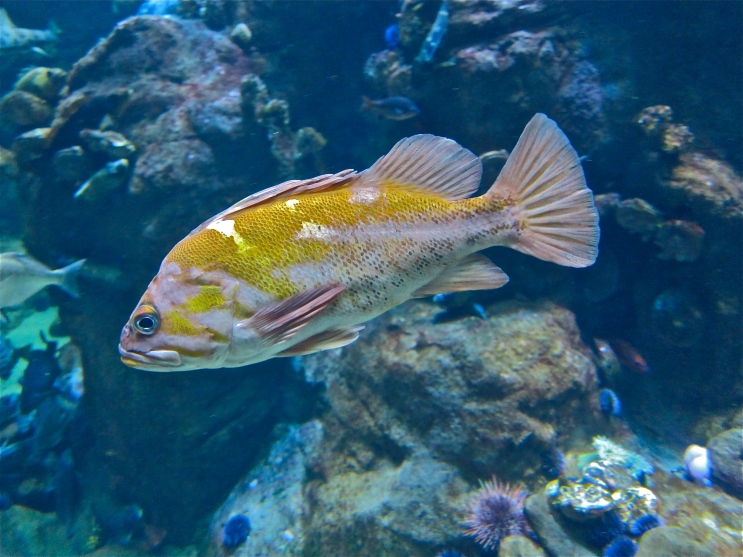TAXONOMY
Kingdom: Animalia
Phylum: Chordata
Class: Actinopterygii (ray-finned fishes)
Order: Scorpaeniformes (Scorpionfishes and flatheads)
Family: Sebastidae (Rockfishes, rockcods and thornyheads)
Genus/species; Sebastes miniatus
GENERAL CHARACTERISTICS: They vary in color from bright red to orange-red with the sides mottled with gray. mouth and fins are red. The red fins usually are edged with black and 3 obscure stripes radiate from each eye. The caudal fin is slightly indented and the mouth is large, with the lower jaw slightly projecting. The vermilion rockfish has scales on the bottom of the lower jaw which make it rough to the touch.
Length up to 91.0 cm (36 inches)
Weight up to 15 pounds

DISTRIBUTION/HABITAT: Eastern Pacific: British Columbia, Baja California, Mexico. Marine; Adults inhabit shallow to deep rocky reefs at depths of 100 to 500 feet, (has been taken from depths as great as 900 feet).

DIET IN THE WILD: Smaller fishes, squid and octopus. Most fishes that are eaten are other smaller kinds of rockfish.
REPRODUCTION: Viviparous. As with all other rockfish, fertilization is internal and the young are mobile with the free-swimming young feeding primarily upon shrimp–like organisms.
LONGEVITY: live up to 22 years
REMARKS; Excellent food fish but does not keep well in the freezer
Color of Life note: Red color is the first to be filtered out as one depends deep into the ocean making this Vermillion rockfish hard to spot by predators.
Ref: California Academy of Sciences, Color of Life Exhibit 2015
References
Ron’s WordPress shortlink wp.me/p1DZ4b-EU
California Academy of Sciences Steinhart Aquarium California Rocky Coast 2017
California Dept of Fish and Wildlife www.dfg.ca.gov/marine/mspcont4.asp
Eschmeyer, W.N., E.S. Herald and H. Hammann, 1983. A field guide to Pacific coast fishes of North America. Boston (MA, USA): Houghton Mifflin Company. p 144
Probably More Than You Want To Know About The Fishes Of The Pacific Coast, Milton Love 1996 Really Big Press p 174
Ron’s flickr www.flickr.com/photos/cas_docents/7804218942/in/set-72157…
fishbase www.fishbase.org/summary/3982
























